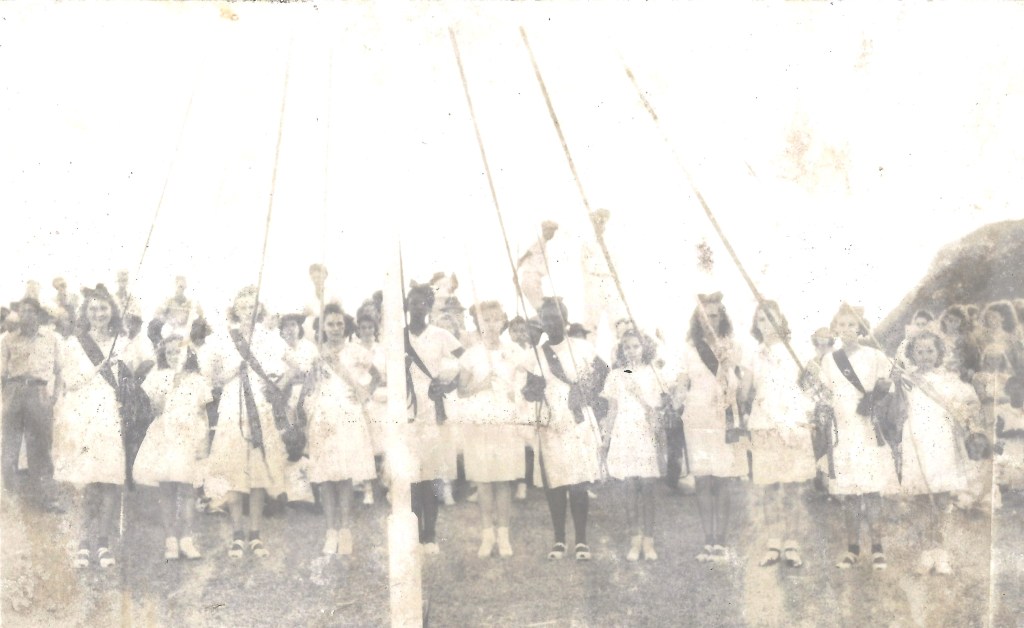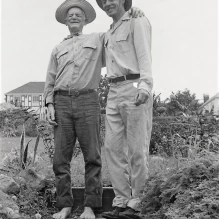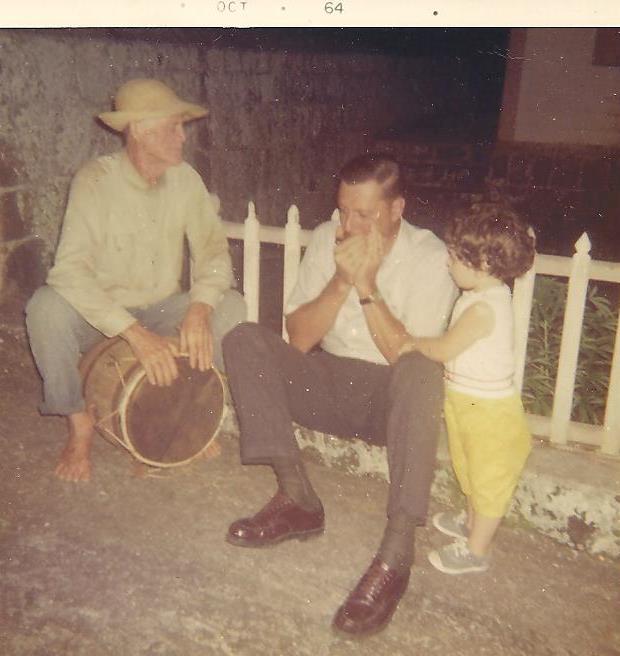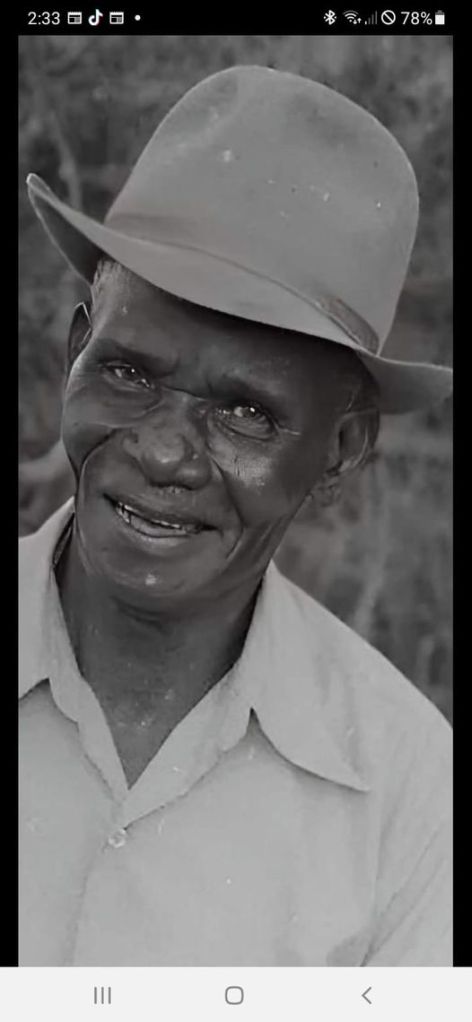Music on Saba through the centuries.

Music on Saba through the centuries.
Copyright Will Johnson
With humans having been interested in some form of musical entertainment or the other I am sure the Arawak and other Amerindian natives who settled Saba in centuries past would have had some form of musical entertainment.

The remaining few settlers like the Kalinago in Dominica still find ways to provide entertainment for their people.

After settlement by the Europeans in 1629 from St. Kitts and later on with the introduction of enslaved Africans there emerged historic musical customs from memories of the lands of origin of the new inhabitants of Saba.
The population was always relatively small compared to other islands surrounding Saba where there was large amounts of trade and agriculture, and accumulation of wealth musical entertainment here was rare when the island was first settled.
As a few people accumulated enough sources of revenue to awaken the wish for occasion for dance and music by a few of the merchant class it became popular to use leisure time to having picnics and home parties accompanied by music.

Even up until the 20th century at occasions like weddings and parties for birthdays music was provided by self-made drums from local wood and goatskins, with even a fife or flute made from local wood or imported. These later improved with the importation of guitars, banjoes and so on, some like the quattro were locally made. The phonograph made an important difference at dances.
The churches imported organs and pianos for their choirs at a later stage. The Church of England dates back to the early 17th century and the Church of Rome took root in 1860 with the building of the St. Paul’s Conversion church in the Windward Side
At dance parties the music was provided by descendants of the enslaved Africans. The drums were the use of the wooden walls in the house by beating on them in a rhythmic way.

As Saba entered the 20th century little had changed.
While the population had increased to 2544 in the year 1914, over 700 men were involved in the maritime trade out of the United States and Barbados where Saban captains and crews lived. Just a few years later with the advent of the oil refineries on Curacao first and then Aruba later many people left the island and carried in some cases their wives and children with them where many of the families continued to live there and have descendants still living there. The same goes for the change in the United States immigration laws. Whereas Saban could come and go as they pleased before 1923, after that they required visas. Many families relocated to Richmond Hill in Queens and remained there. The wives only seemed to remember the hard times on Saba whereas the men were nostalgic for the good old days back on Saba.

Before all this took place Captain Irvin Holm of Booby Hill would tell me that every few years many of the sailors would come down in the winter months, plant some provisions like tannias and banana’s, sweet potatoes on so on. But there were also opportunities for having a good time and there were parties and dances all over the place. Men working on Aruba and Curacao would also come home all dressed up to show those who lived here that the opportunities to make money were on Aruba and Curacao.
There were folks living here who composed songs. Like the daughters of local midwife Rosita Lynch born Hassell,s two daughters Wemely and.. Incum, could compose a waltz at the drop of a hat. One of the more famous songs was “The Maisie is mine and she can sail any time.” Based on a dispute between the owners of the schooner “The Maisie”. They also composed other songs, but they are now lost to history.

This song writing was also popular on other islands as well. I was sent to Saba in 1962 to campaign for the Democratic Party of Claude Wathey. When I came around to where the Occasionals were playing there would be a shout out “There he comes”, and immediately they started up the song “What a night Wathey had to the front. The old man went downstreet to meet a young lady. What a night Wathey had to the front. The young lady was all dressed in red, and she left poor Wathey dead. And Mr. Wathey was brought back up street wrapped in a sheet.” Now I do not know the full lyrics, but a friend of mine she used to tell me with a certain amount of glee “Tis my grandmother who put him away.”
As we came into the 20th century little had changed. The men went to sea and the women stayed on the island, took care of the gardens, raised the children and supplemented the family income by making the newly introduced “Spanish Work” by the local teacher Gertrude Johnson born Hassell.
Here and there we can take a glimpse back in the past.
Frederick Fenger an adventurer who visited Saba in a canoe in 1911 and stayed in The Bottom with Mrs. Robertson. She was the head nurse in the Antigua hospital, moved to St. Eustatius. She ended up having cancer. Her doctor advised her to move to Saba. She died just a couple of weeks after Mr. Fenger left the island and she is buried in the burial ground of the Anglican Church in The Bottom. Mr. Fenger spent ten days on Saba.
Here is what he wrote about social life on Saba.

“It is in the evening that one comes to know the people of Saba. They go quietly about their business during the hours of daylight and then, after supper, for they always eat in their own homes, they meet some place, – it was at at Mrs. Robertson’s that first night- – to thrash out the small happenings of the first day. News from the outside world may have come by sloop or schooner from St. Kitts or Curacao.
Then when the gossip begins to lag, a fiddle will mysteriously appear and an accordion wil be dragged from under a chair while the room is cleared for the “Marengo” or a paseo from Trinidad.
I could have no better chance to observe the “rosy cheeks of Saba,” and to me the delight of the evening was to be once more among people who lacked that apathetic drift of the West Indies which seems to hold them in perpetual stagnation. The women danced together for the most part to make up for the lack of men. From the very first, these people have been seafaring and the few men on the island are those crippled by the rheumatism or too old to go to sea. You will find Saba men all over the West Indies, captains and mates, and crews of of small trading schooners of which they are part owners or shareholders. They have learned the trick of spending less than they earn.

At that time The Bottom was largely owned by the white families, owners of large schooners who could afford to introduce expensive musical instruments to the island. People like the Vanterpool brothers all captains, the Leverocks, the Simmons’ the Beaks family, the Darcey’s, Winfield’s, the Dinzey’s and others. Some of those families could afford to bring back musical instruments like the phonographs, from places they travelled to with their schooners.
Other instruments were locally made. Volney Hassell known as “Bongey” and who was blind from birth explains how he made his famous drums. Melford Gordon also made drums and maracas. The latter were made from the calabash gourds found around the island.
In an interview (page 81) “Saba Silhouettes” Volney tells a thing or two about partying in the past and his making of drums: “We never went nowhere like the people now, ye know, cause there wasn’t nothing’ like there is now, no clubs and all and movies and all that. We just clustered around down here, ye see. Yeah, just like that, all the first cousins, well, and a few friends. All of us. There was a good many of we-we’d all go about so and play the music. I’d play the drum, and the rest of them would play the mouth organs and the maracas and the accordion and all like that so – that’s the way we enjoyed ourself, you see. Well now, with the music we’d go about and knock on tables, chairs or whatever – out in the ground on pans or our how handles or anything like that, , and that’s the way we got in with it. And then we turned to then to make the drums, ye see.


“I,ve had so many now that I can’t tell you how many. I’m going to tell you now, the very first one that I had I might,ve been about eight to ten years. Right. Just about that. Well, and then we’d roll on from then, accordin’ to the saying. I never made my first one, a colored fella made it for me, but it wasn’t made so good as the one I got now. Well, I’m goin to tell, all right. Well now ye see, all right. Well now ye see, we always looks for it to have a thin skin, ye know. They claim it sounds the best. We can make em out of the sheepskin and the goatskin too, ye see; but I don’t eat no sheep and I can’t handle it. I can’t make up my mind to handle the sheepskin, ye know. So all right then, we dries the skin. I makes mine out of the goat skin, but not out of the sheep.. They claim the sheepskin sounds the best, but I can’t, can’t make up my mind to do it. Ye see, we nail them up to the side of the house, we spread them out, so that the skin don’t wrinkle, ye see.

Well then, after the skin is dry we takes it then with our knife and we scrapes it. We bores the hole, ye see, , into the keg,, a nail keg. What the nails come in. Mine is the best. Well, I’ll tell you, it all depends on the quality of the wood, you know. This of mine is a heavy wood, and James and there’s is more lighter like a herring keg. Well now, all right. So the skin is scraped, so we’s goin to put the skin on today. We takes it and we puts it down in water and soaks it-sometimes they stink too! Then we soaks it down good, you know, till it comes dead slap, and then we spread it o’er the keg. And then a couple of we, we pulls it down tight.

“Now you want to know the name of the wood we puts for the hoops. All right, now the pegs is guava, the hoops is man-o-war; we has to have that particular wood, because it can double good. Ye see, there can’t be no curves in the skin. So then when we puts on the skin and we puts the hoop o,er we takes our knife and chucks in the skin like that – keeps putting”in the skin like that. So then we takes the next hoop and ties it. There’s two hoops ye see. Then we ties the rope to the hoop, and then you puts one of the guava sticks and you brings the rope up and you keeps goin’ round like that from peg to peg. And you brings your rope right ‘round comin’ round with the rope like that, ye see. Well, a hatchet or a hammer you keeps knocking on that. Them hoops keeps goin’ down till it brings her tight. Puts her up, and then the next day, when she’s dried, I wiggles with joy. I wets her with alcohol, you know, makes her sound good. You can put it on any time. That dries right off, you know, and that makes the sound.

“ Well, in our time what we used to have was the accordion, you know the guitar, the mouth organ, the maracas and all like that, ye see. But in our time- in the olden times in other words- it was the drum and the triangle and the accordion. You know Wille? Well, all of we so’s played. Willie can play good, a nice mouth organ too, all of we so. We been Hell’s Gate, St. John’s all about. That was good music.”

James Evered Jackson in his interview for Saba Silhouettes has the following to say. I have written about Evered before in an article on The Saba Islander. On page 140 he tells us the following, “For me to explain you the dancing, because it’s only just a dance, but only that’s the name of the dance, the quadrilles. You have other dances too, such as waltzes and merengues and all like that so.

There were parties then too. Oh, parties then! You know when you,s young what you calls for. All the time you like dancing and allike that so. Well, you know, in them times then we was growing up we really like dancing, you know, and we did dance plenty. Them times we was young already and we liked our girlfriends and all like that so. We had partes – just like you see our homes we’d have our home parties. Suppose now that I’d have a party here in my home, and then the next time you’d have one in your home and invite me, one from the other that way. That was in the olden times. We had accordion, drum triangle. Well, we’d have cake and our dinking and make tea. Twelve o’clock we’d make tea, and just like that so.

Now, well, you see, with the club, it’s different to our times. In our time we didn’t have no club dances, everything was your private home. Well, some people still does. He that don’t feel to mix in with everybody; they’ll have a li’l private dance in their home. When I grew up everybody has his class. You dances with your class. I danced with my class. Each man used to dance with his own color. We been always friends with the whites. The whites and the blacks is always been friends together; but when it comes on that when you was having a party and I was having one, each man had his own color. You know with the color, I don’t have no say because I come and met each man classing with his own color, so it don’t worry me anything about the color, with the color. You know, color is this way, color don’t be everything. Color is not everything. You know what I mean. Your color can be bad, and my color can be bad. We have the two sets. Yours can be as bad as mine, and mine can be as bad as yours. ITS LIKE THAT. We have bad whites and bad blacks. How I look after it is this way. You might think yourself better than me, and I might think mine better than you. You know what I mean? You can say, well, just cause I’m black you ain’t going where I am. Maybe I’ll say that I am not going where you is, you’ll think yourself tis or you’ll think it that.” For more on Evered Jackson check “Neighbours” on the Saba Island or the interview with him in Saba Silhouettes by Dr. Julia Crane.

Evered put this very diplomatically but for me it became a major problem. I could not defend something I was not responsible for. so, in 1977 when I was Administrator a.i. I called in the two club license holders and met with them separately. Told them that I would be withdrawing their license as the license was not being used as the law required. That they could take the matter to Court and that I had prepared a new bar license for them, and everything was ready and that if the matter went to Court then in the meantime the “club” would be closed down until a verdict and appeal was made. All that was not necessary, and both parties accepted my decision, and the rest is history.
The last part of the 20th century with the advent of a better economy and the availibilty of electronic equipment things changed.
First we started with DeeJay’s. The famous one was D.J. Ruby (Robert Jarvois) from St. Maarten who was popular with the old folks. From there one we have a number of D.J’s of our own. First of all is Dave Levenstone who also has a wellknown Radio Program on “The Voice of Saba Radio.” Followed by the following: Alessandro Guido, Kevin Hassell, Craig Hassell (now in the Florida Keys), Cerillio Martin, Shefton Botswain, Noah Zagers, Mikey Nicholson and Desmond Caines.
Then we also had the local bands. Saba Spice Steel Orcestra of the Sorton family. I will add a phto of this band when I find it in my computer.

The Occasionals which I have an article on The Saba Islander” with their full history. They still play an important role in our island.
Dave Levenstone gave me also a list of other local bands.
“Sudden Rack and Scrape”, The Soul Redemption, Dysonic Band, One blood band, Page one band, Entice International Band, Escape Band, The Rough Neck Band, Destruction Band, XP Band, New Wave Band.
No lack of imagination of finding names for new bands. If you feel left out check with Dave who was so helpful in finding names.
And so, I think I have given a good idea as to how things were in the past, and still will find extra photos to go with the article.
In the book Caribbean Interlude by Joshua Kenneth Bolles he mentions some of the customs around Christmas time. Mr. Bolles arrived on Saba on September 24th, 1931, from St. Kitts. He stayed eleven months on the island. He was to experience a people and a culture which in a few years would undergo vast changes.
In the chapter PEACE starting on page 157 I will mention some of his observations on what was taking place in Windward Side on Christmas eve.
The evenings of Christmas week were mellowed by the music of guitars and the throbbing of goat-skinned drums. The African tom-tom had lost its ominous beat and been turned to another purpose.
In Saba, Christmas is preceded by dancing, the lighting of firecrackers, and the flying of kites. . Gifts borne by blacks on silver trays are exchanged and opened before the holiday. There are “trees”, of any convenient species, and carols are sung in churches and homes
Two o’clock Christmas morning.
Suddenly, nearby a burst of sound. Eight black men playing guitars, heading a motley group of fifty.
Four o’clock.
Guitars strike up. Drums throb. A hundred blacks weaving through winding streets make merry.
Silent and dark the streets, save in the direction of the English Quarter from which comes softly the beat of drums. Voices singing…nearer and nearer. Cool… soothing. Carolers from St. John’s.
Bolles started off this chapter with “A full moon, combined with the near approach of Christmas, had a strange effect on the black people.
And I will leave it at that for now.
